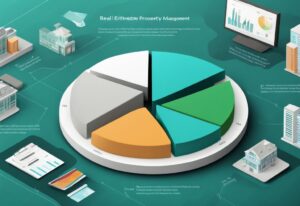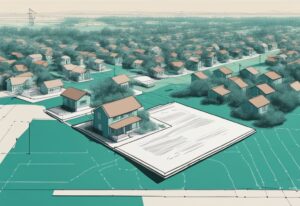
Ever wondered why BOVs are a buzzword in the real estate industry? The Broker’s Opinion of Value (BOV) is a major player in property transactions, providing a cost-effective yet meticulous estimate of property worth. As a seasoned real estate professional, I can tell you – understanding your property’s value is not just vital, it’s a game-changer!
In this article, we will delve into the depths of a BOV – what it is, how it’s prepared, and above all, why it matters to you. Whether you’re buying, selling, or refinancing, a BOV offers quick, on-the-spot insights, removing the need for tedious, expensive appraisals. Ready to simplify your real estate decisions? Let’s forge ahead!
So, are you set to unravel the mystery of BOVs and leverage their benefits? Here’s your essential guide, simplifying the complexities of BOVs and the real estate world. Let’s dive in.
Understanding BOV in Real Estate: A Comprehensive Guide
Introduction to BOV in Real Estate
A Broker’s Opinion of Value (BOV) is a pivotal concept in real estate, providing a professional assessment of a property’s market value. This estimation, made by a licensed real estate broker, serves multiple stakeholders, including property owners, prospective buyers, lenders, and investors. A BOV is commonly utilized in commercial real estate for activities like refinancing, selling, or leasing properties.
One of the significant advantages of a BOV is its cost-effectiveness and timely delivery compared to traditional professional appraisals. It’s a practical tool for quick decision-making in the real estate market, offering insights without the high costs and delays.
How is a BOV Prepared in Real Estate?
Steps Involved in Preparing a BOV
The preparation of a BOV involves several meticulous steps. Initially, the broker performs a thorough property inspection. Following this, extensive data collection is conducted, focusing on the property’s condition and characteristics. The broker then gathers recent sales data of comparable properties and analyzes current and historical market trends. To formulate the valuation, the broker employs various approaches, including the sales comparison approach, replacement cost analysis, and income capitalization approach.
Importance of Accurate Data Collection and Analysis
Accurate data collection and analysis are critical for a reliable BOV. The broker’s expertise and knowledge play a crucial role here. Comprehensive data from reliable sources ensures that the BOV reflects a realistic estimate of the property’s market value. Market conditions and recent sales are significant factors considered in the valuation process, ensuring the BOV provides a realistic figure.
Key Elements of a BOV
What Makes Up a BOV Report?
A detailed BOV report consists of several key components. It includes a summary of the property, detailing its location, size, and general condition. The report also examines local market conditions and trends, providing a comparable sales analysis. An executive summary outlines key valuation beliefs. Detailed information about the tenant base and financial stability is included, along with a property proforma, condition assessment, and market report.
Understanding the Role of Market Conditions and Sales Comparisons
Market conditions and sales comparisons are crucial elements in a BOV. Current market demand and supply dynamics significantly impact property value estimations. Recent sales of similar properties offer a baseline for these valuations. Economical and regional trends are also considered, with brokers assessing any property shortcomings and challenges to provide a holistic valuation.
BOV vs Professional Appraisal: A Comparative Study
Comparing Cost, Time Efficiency, and Accuracy
A BOV is generally more affordable and quicker to prepare than a professional appraisal, typically costing between $250 and $2,500 and taking less than a week. In contrast, professional appraisals are more expensive and time-consuming. While BOVs offer subjective accuracy reliant on broker expertise, appraisals follow a standardized methodology, ensuring a higher degree of precision.
Understanding the Legal Standards for BOVs and Appraisals
Professional appraisals are bound by strict legal and regulatory standards, making them essential for legal transactions and court cases. Conversely, BOVs are less formal and not legally binding, serving primarily for informational purposes rather than legal documentation. However, they offer valuable insights for preliminary decision-making processes.
Practical Applications of a BOV in Real Estate
Uses of a BOV in Property Transactions and Financing
In property transactions, a BOV serves as a quick reference for pricing properties. Lenders frequently use BOVs to provide initial term sheets to borrowers. Additionally, BOVs assist property owners and potential buyers in making informed decisions during buying or selling processes.
The Role of a BOV in Commercial Leasing and Insurance Underwriting
BOVs play a significant role in commercial leasing, helping determine lease terms and rental rates. In insurance underwriting, they aid insurance companies in preliminary policy underwriting and risk assessments. This ensures that lease agreements and insurance policies are appropriately aligned with the property’s market value.
Conclusion: Can a BOV Simplify your Real Estate Decisions?
BOVs are practical tools for quick property value assessments, offering crucial insights to aid in real estate decision-making without the high costs and delays of professional appraisals. While not a substitute for formal appraisals, they provide actionable insights, making them valuable for informed, timely, and cost-effective property decisions.
Common Questions about BOVs Answered
-
How does a BOV Differ from a Professional Appraisal?
BOVs are quicker, cheaper, and less formal. They rely on broker expertise rather than standardized protocols. -
The Timeframe Required for Preparing a BOV
Typically prepared within a week, offering a rapid valuation turnaround. -
How Reliable Is a BOV Compared to an Appraisal?
Reliability can vary; it depends on the broker’s experience and the thoroughness of the market analysis. Not as rigorously accurate as professional appraisals due to lack of standardization. -
When Should One Opt for a BOV Over an Appraisal?
When a quick, cost-effective estimate is needed. Suitable for preliminary decisions, refinancing, and informal assessments. -
Is a BOV Equally Effective for Residential Properties?
While BOVs are more common in commercial real estate, they can be used for residential properties. Particularly useful in situations where a full appraisal is not necessary or cost-effective.

Introduction to BOV in Real Estate
In this section, we will explore the concept of BOV in real estate, why it is important, and how it benefits various stakeholders in the property market.
What is a BOV and Why it Matters?
Understanding what is a BOV in real estate is crucial for anyone engaged in property transactions. A BOV, or Broker’s Opinion of Value, is a professional assessment conducted by a licensed real estate broker to determine a property’s market value. This type of valuation plays a significant role in the real estate industry and offers several advantages for various stakeholders.
Picture this: You own a property and you’re curious about its current market value. Or maybe you’re a potential buyer or an investor looking at your next big purchase. This is where a BOV comes in handy.
A BOV is particularly valuable for property owners who want to know their asset’s worth; for more insights on how to effectively leverage a Broker’s Opinion of Value, check out this resource on Broker Opinions of Value (BOV) – Win More Listings Using this Formula. It’s equally important for buyers making informed purchase decisions, lenders assessing the risk of lending, and investors evaluating potential returns. By delivering an approximate market value, a BOV helps everyone understand a property’s worth effectively.
Think about commercial real estate. BOVs are often used for refinancing, selling, or leasing purposes. They offer a viable alternative to professional appraisals, and here’s why: BOVs are cost-effective and quick. Professional appraisals can take time and money, but a BOV? It’s usually done within a week.
In essence, a BOV offers a strategic advantage for those involved in the real estate market. It serves as a practical tool that enables stakeholders to make well-informed decisions about property investments, transactions, and financial planning without the overheads associated with traditional appraisals.
How is a BOV Prepared in Real Estate?
In the world of real estate, a Broker’s Opinion of Value (BOV) holds significant importance. Understanding how a BOV is prepared can provide key insights into property valuation processes.
Steps Involved in Preparing a BOV
The journey to a reliable BOV begins with a detailed inspection of the property. Picture a seasoned broker, meticulously examining every facet of the property. They assess the building’s structure, amenities, and any notable upgrades or necessary repairs.
Next comes data collection. This isn’t just a casual check; it’s comprehensive. The broker gathers crucial details such as the property’s size, layout, age, zoning, and other relevant features. They also extend their scrutiny to the surrounding area, evaluating neighborhood conditions and accessibility.
After the data-collection phase, it’s time for comps—or comparable properties. The broker analyzes recent sales of properties similar in location, size, and condition. These comps serve as a benchmark for the property being evaluated.
Market trends play a critical role too. By diving into both current and historical data, the broker gauges market dynamics that could impact the property’s value. Economic indicators, regional developments, and seasonal trends all contribute to this thorough analysis.
Finally, the broker dives into valuation using various methods. The sales comparison approach directly compares the property to the collected comps. The replacement cost analysis evaluates what it would cost to rebuild the property from scratch. The income capitalization approach, on the other hand, looks at the property’s potential for generating income.
Importance of Accurate Data Collection and Analysis
The accuracy of a BOV hinges on precise data collection and expert analysis. An experienced broker, with a deep understanding of the market, is essential for a precise valuation.
Gathering comprehensive data from reliable sources ensures the broker has all the necessary information for an informed valuation. Market conditions and recent sales are pivotal components. Assessing these accurately enables the broker to offer a realistic and current estimation.
Understanding both micro and macroeconomic trends, combined with a detailed examination of comps, ensures the BOV mirrors the true property market conditions. By relying on precise data and thorough analysis, brokers provide a realistic and actionable BOV.
This helps property owners, buyers, lenders, and investors make well-informed decisions, ultimately ensuring confidence in their real estate ventures.

Key Elements of a BOV
What Makes Up a BOV Report?
A BOV (Broker’s Opinion of Value) report is a comprehensive document that evaluates a property’s market worth. Here’s what you typically find in a BOV report:
- Summary of the Property: Key information about the property such as location, size, and condition helps establish a baseline for evaluation. Think of it as setting the scene for the property’s story.
- Local Market Conditions and Trends: The report looks at the broader market setting, including key financial metrics like OPEX in real estate, which can impact property valuations.
- Comparable Sales Analysis (Property Comps): Recently sold properties similar in location, size, and condition are analyzed. These comparables act as a benchmark, offering a glimpse into what buyers are willing to pay.
- Executive Summary: A snapshot of the findings, summarizing key valuation beliefs and the logic behind the estimated value. It’s the CliffsNotes version of the report.
- Detailed Information About the Tenant Base and Financial Stability: For rental properties, understanding the tenant base’s stability and financial health is crucial. This section dives into current tenants and their financial reliability.
- Property Proforma, Condition Assessment, and Market Report: The proforma provides financial projections, the condition assessment evaluates the physical state of the property, and the market report outlines external factors influencing value.
This includes current demand, supply dynamics, and trends affecting property value. It’s like getting a weather forecast for the real estate market.
Understanding the Role of Market Conditions and Sales Comparisons
Understanding what is a BOV in real estate isn’t just about the property itself—market conditions and sales comparisons play a vital role:
- Current Market Demand and Supply Dynamics: The balance between properties for sale (supply) and buyers looking for properties (demand) hugely impacts value. High demand with limited supply typically drives prices up.
- Recent Sales of Similar Properties: Comparable sales data provide a critical baseline for valuation. These comparables help gauge the prices buyers are willing to pay for similar properties in the current market.
- Economic and Regional Factors: Broader economic conditions, such as interest rates, and regional factors like employment rates and infrastructure projects, affect property values. These elements are essential to the analysis.
- Assessment of Property Shortcomings and Challenges: Every property has its flaws. A detailed BOV identifies and accounts for deficiencies or challenges, such as structural issues or location drawbacks, ensuring a balanced valuation.
Each method and component aims to create an accurate, reliable property value estimate. Understanding what is a BOV in real estate through this detailed lens helps property owners, buyers, and investors make well-informed decisions.
BOV vs Professional Appraisal: A Comparative Study
Comparing Cost, Time Efficiency, and Accuracy
A Broker’s Opinion of Value (BOV) in real estate offers a cost-effective solution for property valuation, typically ranging from $250 to $2,500. This makes it a budget-friendly option compared to professional appraisals, which are considerably more expensive. The time efficiency of a BOV is another prime advantage, as it can be prepared in less than a week. This rapid turnaround is crucial for stakeholders needing quick valuation insights.
While BOVs provide subjective accuracy based on the broker’s expertise, professional appraisals are bound by standardized methodology, ensuring a more uniform approach to determining property value.
Understanding the Legal Standards for BOVs and Appraisals
It’s important to comprehend the legal standing and formalities associated with BOVs and professional appraisals in real estate. Professional appraisals adhere to strict legal and regulatory standards, making them a necessity for legal transactions and court-related matters.
These appraisals follow stringent guidelines to ensure precision and objectivity in property valuation. On the other hand, BOVs are less formal and are not legally binding. They serve as informational tools rather than official documents, making them unsuitable for legal purposes but highly useful for quick, cost-efficient assessments.
### Keyword Focus:
- What is a BOV in real estate?
- Broker’s Opinion of Value
- Real estate valuation
Integrating the key terms such as “what is a BOV in real estate,” “Broker’s Opinion of Value,” and “real estate valuation” ensures a better understanding for those exploring valuation options within the real estate domain. These terms are crucial for keeping the content relevant and searchable for individuals seeking specific information on BOVs.
Practical Applications of a BOV in Real Estate
Broker’s Opinion of Value, commonly known as BOV, plays an essential role in various aspects of the real estate industry. Whether it’s aiding property transactions, financing, or even commercial leasing, understanding BOV’s applications can offer significant advantages.

Uses of a BOV in Property Transactions and Financing
A Broker’s Opinion of Value (BOV) in real estate serves as a pivotal tool in numerous property transactions and financing processes. It provides a quick reference for property pricing, enabling sellers and buyers to make informed decisions without the extensive time and cost commitments associated with a full professional appraisal.
For lenders, a BOV can be instrumental in issuing initial term sheets to borrowers, offering a preliminary yet reliable estimate of property value. This swift valuation aids in speeding up the loan approval process, making it a practical solution for both commercial and residential real estate scenarios.
Additionally, property owners considering selling or refinancing can leverage a BOV to gauge current market standing, ensuring they set competitive and realistic prices based on recent trends and comparable sales.
The Role of a BOV in Commercial Leasing and Insurance Underwriting
In the commercial leasing sector, understanding what a BOV in real estate entails is essential for setting appropriate lease terms and rental rates. By providing a nuanced valuation based on the property’s current market condition, brokers help landlords and property managers optimize their leasing strategies to attract desirable tenants while achieving favorable rental returns.
Furthermore, a BOV can significantly aid insurance companies in the preliminary underwriting process. It delivers a snapshot of the property’s value and condition, allowing insurers to assess risk and determine suitable coverage policies more efficiently. This preliminary assessment ensures that both insurers and policyholders enter agreements with a clear understanding of the property’s worth and associated risks, facilitating smoother transactions and more effective risk management strategies.
Conclusion: Can a BOV Simplify your Real Estate Decisions?
A Broker’s Opinion of Value (BOV) plays a crucial role in the realm of real estate, offering a quick, cost-effective alternative to traditional appraisals. When considering what is a BOV in real estate, it’s essential to recognize its strengths and limitations.
A BOV provides a swift property value assessment, which is particularly useful for property owners, buyers, lenders, and investors aiming to make informed real estate decisions without incurring significant expenses or delays.
Firstly, BOVs deliver actionable insights by leveraging broker expertise to evaluate property worth. They are invaluable for preliminary decision-making. Brokers conduct property inspections, gather detailed data, and analyze market trends and comparable sales to furnish a comprehensive valuation. This process aids stakeholders in:
- Setting realistic pricing
- Negotiating terms
- Strategizing investments promptly and economically
However, while BOVs offer substantial advantages, they are not substitutes for professional appraisals. This is especially true in scenarios demanding rigorous legal and regulatory compliance.
Appraisals follow stringent methodologies and provide legally binding valuations suitable for court cases and formal transactions. In comparison, BOVs are more flexible, subjective assessments tailored for faster, operational decision-making settings.
In summary, understanding what is a BOV in real estate underscores its role as a powerful tool for simplifying property assessments, refining investment strategies, and facilitating smoother transactions.
As a cost-effective alternative to appraisals, BOVs empower stakeholders to navigate the real estate landscape with greater agility and confidence.
Common Questions About BOVs Answered
How Does a BOV Differ from a Professional Appraisal?
A Broker’s Opinion of Value (BOV) is quicker, cheaper, and less formal compared to a professional appraisal. Think of a BOV as a flexible, on-the-spot estimate. It relies on the broker’s expertise without following strict standardized protocols, making it much faster and more straightforward for quick evaluations.
The Timeframe Required for Preparing a BOV
Typically, a BOV can be prepared within a week. This rapid turnaround is invaluable for those who need a quick property valuation. Unlike professional appraisals that may take longer, a BOV offers a swift and efficient solution for timely assessments.
How Reliable Is a BOV Compared to an Appraisal?
The reliability of a BOV depends largely on the broker’s experience and the thoroughness of their market analysis. While it may lack the rigorous accuracy of professional appraisals due to fewer standardized protocols, a well-executed BOV can provide realistic estimates sufficient for preliminary decision-making.
When Should One Opt for a BOV Over an Appraisal?
Opt for a BOV when you need a quick, cost-effective estimate. BOVs are perfect for preliminary decisions, refinancing, or situations where an informal assessment suffices. They save you time and money compared to more detailed, professional appraisals.
Is a BOV Equally Effective for Residential Properties?
Although more common in commercial real estate, BOVs can also be effective for residential properties. They’re particularly useful when a full appraisal isn’t necessary or cost-effective, providing a practical alternative for residential property assessments.





